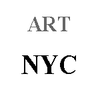Markus Gabriel (06 APR, 1980~ )
Publisher: Polity press
Published: 22 MAY, 2017

Metaphysics argues that there is only one real object in this scenario, namely Vesuvius Volcano itself. Metaphysics believes that the volcano itself remains the same, only seeing one identical volcano unexpectedly once in Sorrento and the other in Naples.
Conversely, constructivism assumes that there are three objects in this scenario. The three volcanoes Astrid saw: Vesuvius, your Vesuvius, and my Vesuvius! We have no idea what it is, even if there is no object behind it or if there is a rumor.
On the other hand, the new realism assumes that there are at least four objects.
1. Vesuvius Volcano
2. Vesuvius Volcano from Sorrento (Astrid's Perspective)
3. Vesuvius Volcano from Naples (Your Perspective)
4. Vesuvius volcano from Naples (my point of view)
Postmodernism is also just a variant of metaphysics. To be precise, postmodernism is one of the very common arguments for constructivism. Constructivism is based on the premise that nothing exists in itself. Rather, it is argued that all facts are nothing more than those made up by our various discussions or academic methods. Imanuel Kant is the most important spokesman for this tradition. Kant argued that we cannot know the world in itself. Whatever we know, it is only human-made.
A common example in this context, let's look at color. Since Galileo Galilei and Isaac Newton at the latest, it was suspected that color did not exist in itself. This assumption angered a person like Goethe, who was sensitive to color, and made him decide to write 『Color theory Favenlehre』. Of course, you might think that color is only a wavelength of a certain length and does not exist by itself because it is only visible when our perspective captures it. Therefore, the world itself is completely colorless and is a mass of particles that are stabilized only by gravity. This very argument, however, is already metaphysics. Metaphysics does not claim that the world in itself is completely different from the world we see. Kant was only much more thorough.
Kant argued that these particles are also just the framework of time and space, that is, the way the world appears to us. In Kant's view, we cannot figure out what the world itself is. We can only know because we made it, and we do. In a famous letter to his fiancee Wilhelmine von Czenge, German playwright Heinrich von Kleist compares Kant's constructivism to a painting.
So the problem we have to solve is to find out what happens to spectators in the world, not always and everywhere. I would like to solve this task with a new ontology. The word ontology Ontology has traditionally been understood as "theory of being". The ancient Greek verb "to on" is literally "being" and "logy" is "theory".
After all, the core of ontology is the meaning of existence.

![[100 Challenge] DanJi’s reading note_53](http://artnycnewyork.com/cdn/shop/articles/IMG_3357_1100x.jpg?v=1707322987)